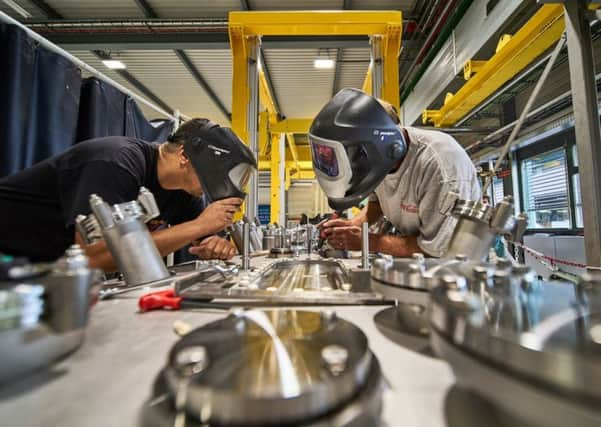Lancaster University scientists help spearhead world first in physics


A team of scientists from the UK, led by Lancaster University and the University of Manchester, have worked alongside experts from around the world to successfully test a new technology called ‘crab cavities’ and rotate a beam of protons for the first time.
The work has taken place at The European Organization for Nuclear Research, known as CERN, a European research organisation that operates the largest particle physics laboratory in the world.
Advertisement
Hide AdAdvertisement
Hide AdThe test, which took place on May 23 using the Super Proton Synchrotron at CERN, in Switzerland, showed that bunches of protons can be tilted, which increases the bunches’ surface area.
This is important because it allows scientists to increase the number of collisions of protons in experiments when bunches are fired at beams in the Large Hadron Collider.
This significantly increases the amount of data needed to discover new particles such as the Higgs Boson.
The crab cavities are an important part of the future upgrade to the Large Hadron Collider – a project called the High-Luminosity Large Hadron Collider (HL-LHC).
Advertisement
Hide AdAdvertisement
Hide AdThe HL-LHC, which will be commissioned after 2025, will increase the luminosity – which is number of collisions per surface area – by a factor of five to ten. This improved sensitivity will enable physicists to use the Large Hadron Collider to observe more rare processes and perform precise studies of new particles.
The first two crab cavity prototypes were manufactured at CERN with experts at Lancaster University and the Science and Technology Facilities Council, as well as in the United States.
Engineers at Lancaster were involved in, and in many cases led, the design of some of the subsystems, and in all phases of testing from sub-systems to the final test.
Lancaster University’s Dr Graeme Burt is the HL-LHC-UK Project Manager and UK Crab Leader and has been working on crab cavities for more than 11 years.
Advertisement
Hide AdAdvertisement
Hide AdHe said: “The importance of this ground-breaking result cannot be underestimated. I am delighted the UK team could contribute in all phases of this experiment through the HL-LHC-UK project in support of our CERN colleagues.”
The University of Manchester was involved in the beam dynamics modelling, and understanding how to measure the crabbing.
The University of Manchester’s Dr Rob Appleby, HL-LHC-UK spokesperson, said: “I am delighted for the fantastic and world-first result, and we in HL-LHC-UK look forward to working with CERN into the future to build HL-LHC in order to significantly improve the LHC performance.”
Prof Carsten Welsh, Head of Department at Liverpool Physics, which was involved in final tests, said: “This is a fantastic result that will help make the LHC an even better accelerator in the future. It was made possible by close collaboration between UK institutions contributing to the High Luminosity upgrade and CERN.”
Advertisement
Hide AdAdvertisement
Hide AdThe STFC Daresbury Laboratory designed many of the subsystems used in the test including thermal shields, magnetic shields and cavity supports.
Dr Shrikant Pattalwar, Crab Cavity Cryomodule UK task leader from the STFC, said: “It’s a fantastic result that reflects excellent coordination between the UK, CERN and the US teams. I am really proud to be a part of such an exciting collaboration.”
The Lancaster University team includes Graeme Burt, Jamie Mitchell, Nick Shipman and Emi Yamakawa, Thomas Jones and Amos Dexter.
The above researchers are also affiliated to the Cockcroft Institute.